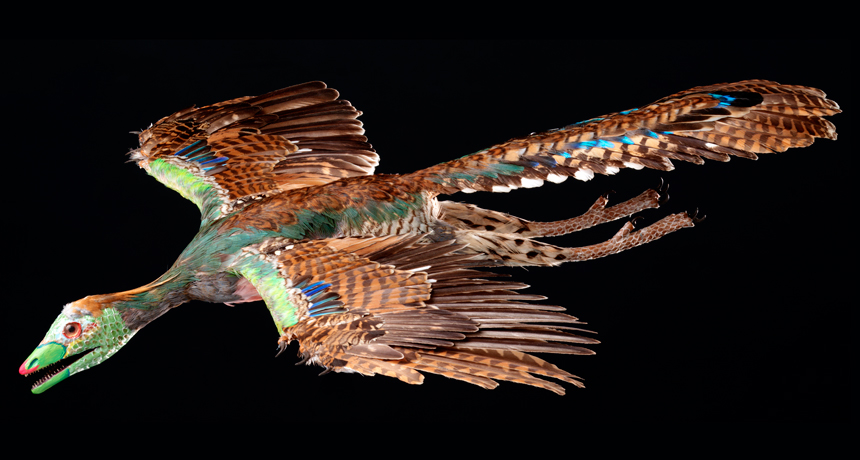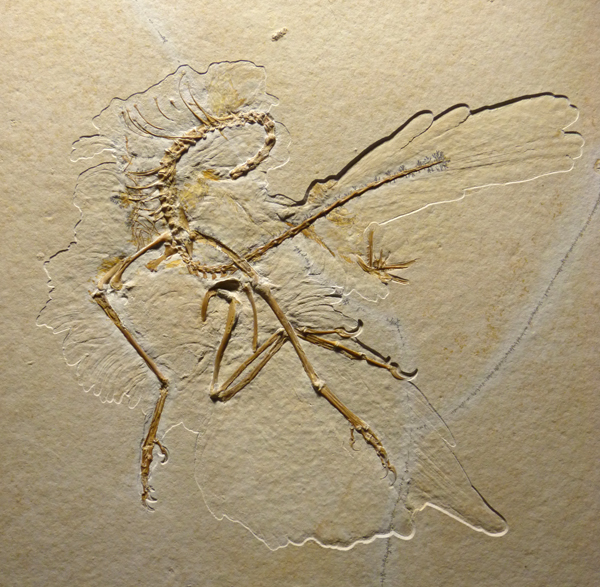Flightless dino-bird wore full-body feathers
New Archaeopteryx fossil complicates plumage evolution

EARLY BIRD The flightless dinosaur-like bird Archaeopteryx could glide, as seen in this artist’s illustration. A new fossil shows it had feathers all over its body, including on its legs.
Bavarian State Archaeological Collection








